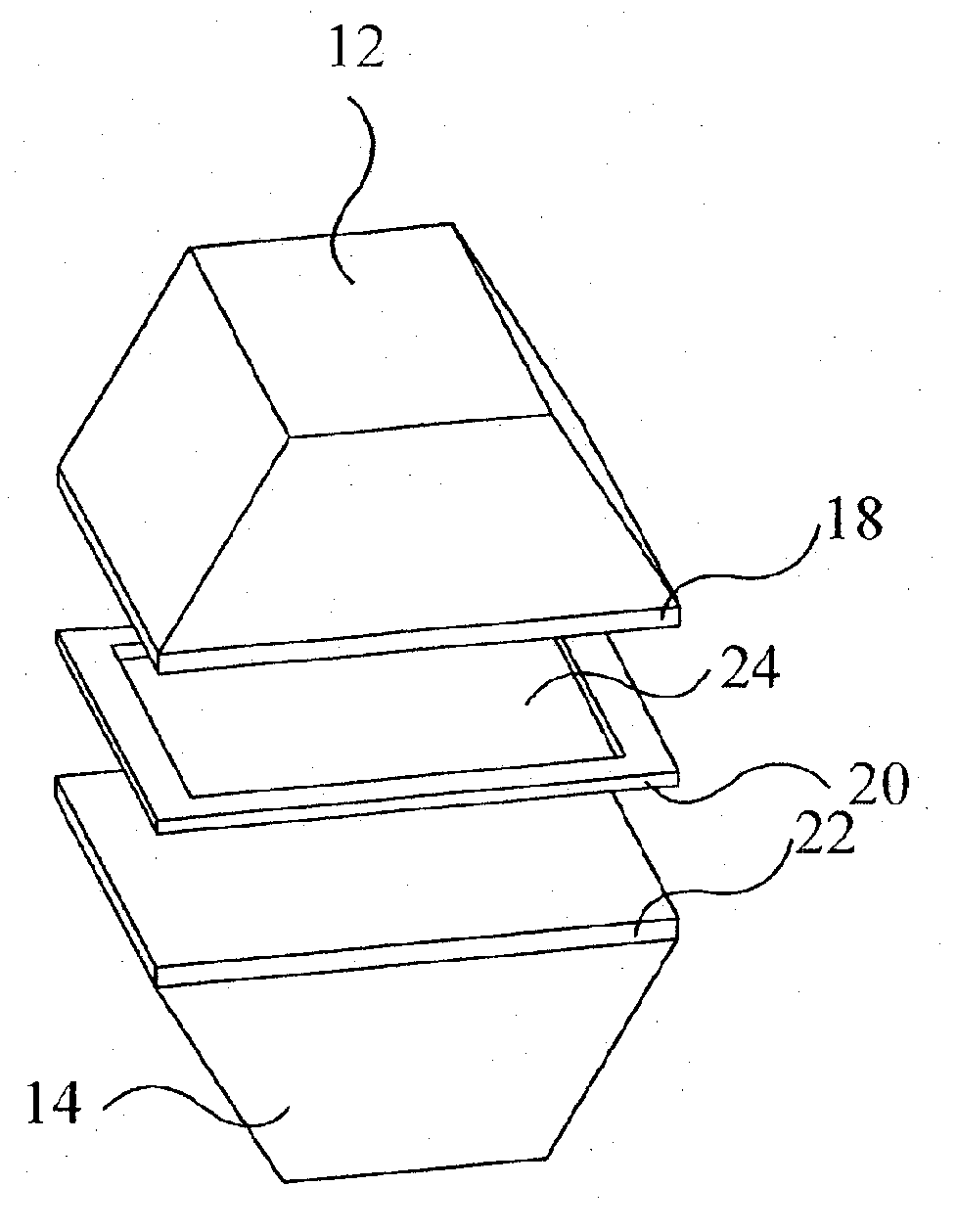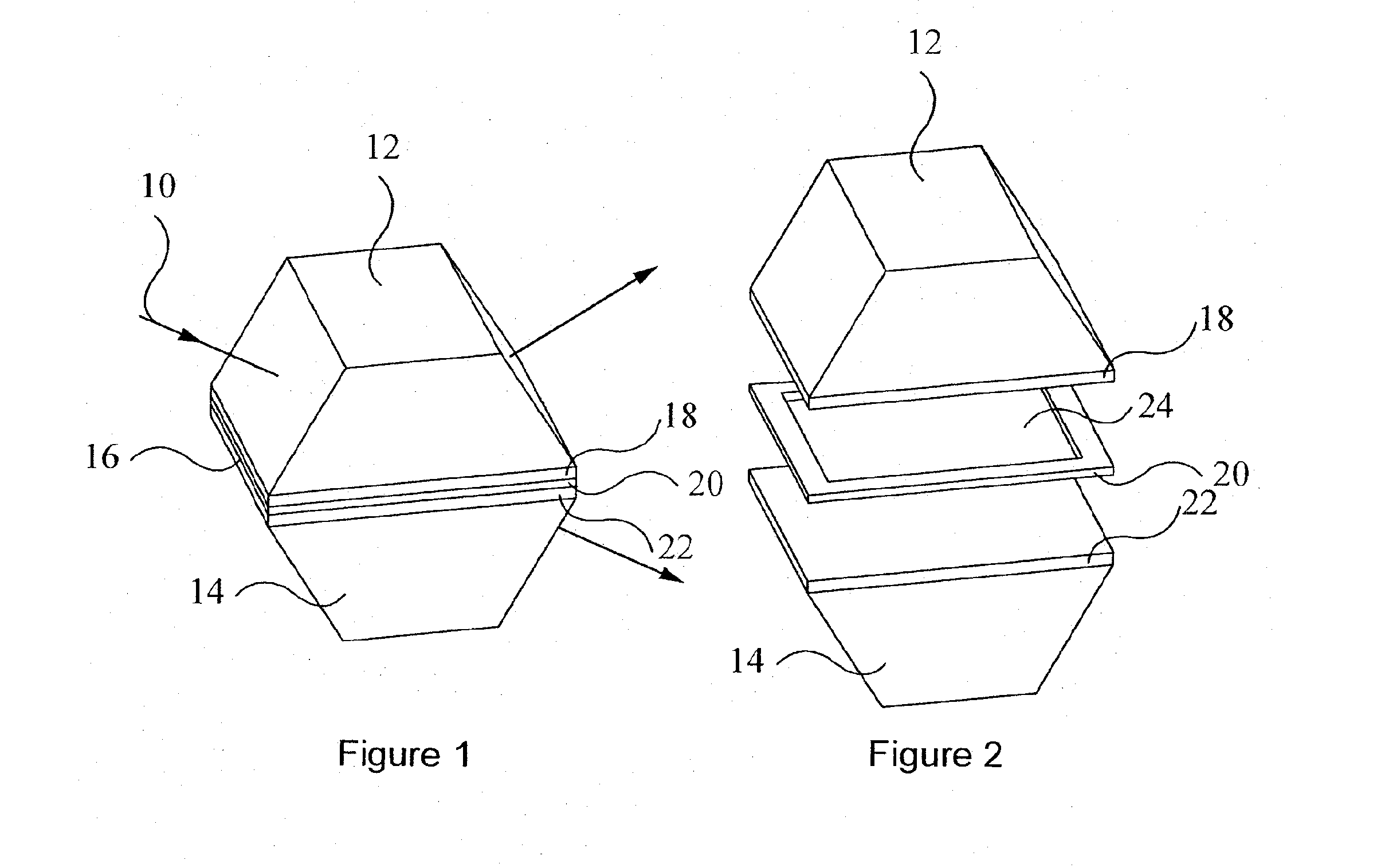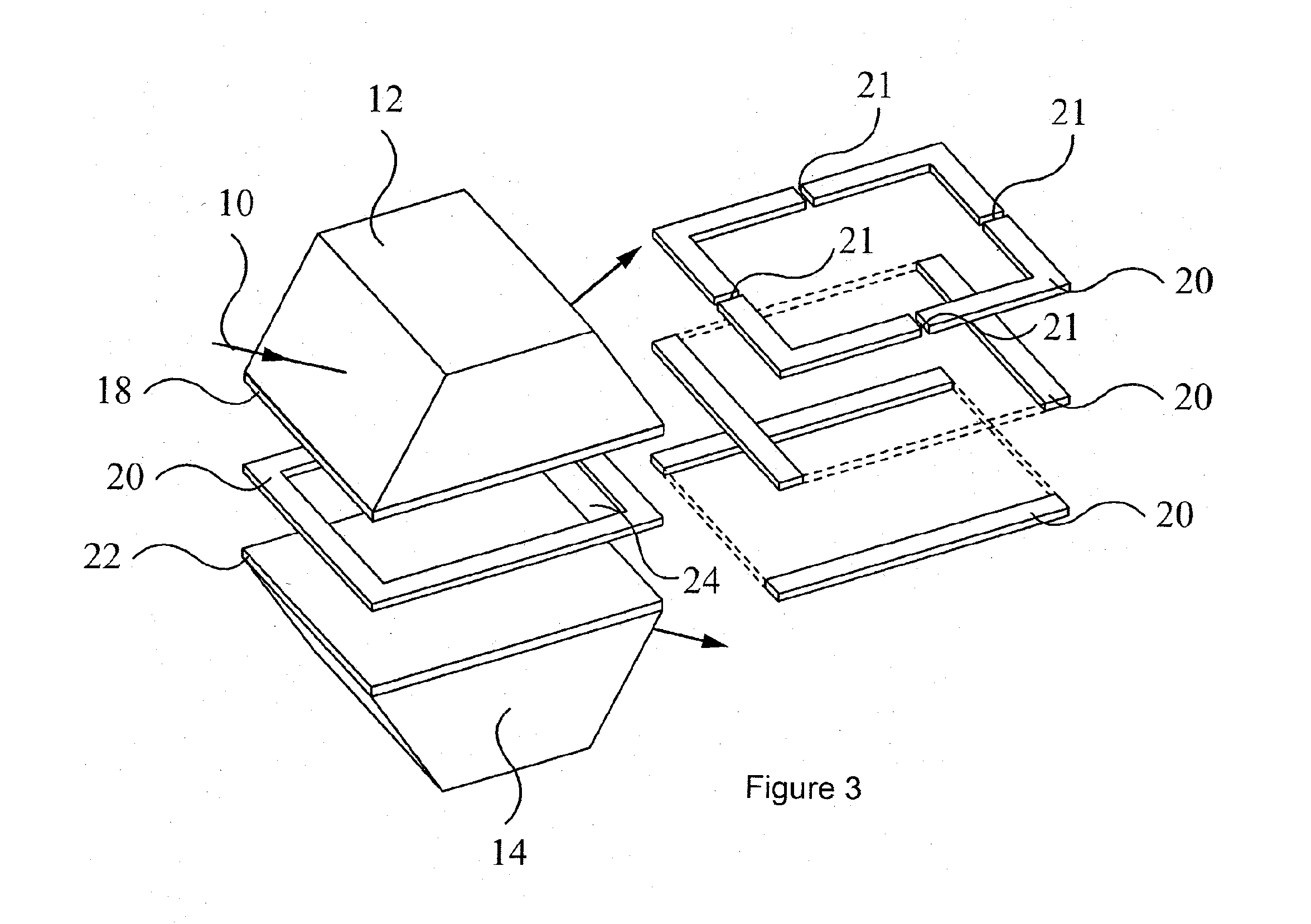Thin film optical filters with an integral air layer
a technology of optical filters and air layers, applied in the field of optical filters, can solve the problems of optical filters often not producing satisfactory, undesirable polarization effects, and low polarization efficiency, and achieve the effects of reducing cost, effective control of polarization effects, and convenient fabrication
- Summary
- Abstract
- Description
- Claims
- Application Information
AI Technical Summary
Benefits of technology
Problems solved by technology
Method used
Image
Examples
Embodiment Construction
[0052]The layouts the novel thin film optical filters with an integral air layer will be explained with reference to FIGS. 1 to 4. When incident light 10 is incident at the thin film coating surface at an oblique angle, some of the incident light will be reflected and some will be transmitted according to the filter requirements.
[0053]As shown in FIGS. 1 to 4, the thin film optical filter has a transparent top-prism 12 and a transparent bottom-prism 14 having a refractive index n0 and a thin film coating structure 16 at the interface between the two prisms. The thin film coating structure 16 consists of a top coating 18, a spacer layer 20 and an optional bottom coating 22. The spacer layer 20 bounds a cavity containing an air layer 24, also referred to herein as the cavity layer. The top- and bottom-coatings 18, 22 together with the air layer 24 form a complete thin film interference coating structure. The air layer 24 acts as an interference layer within the complete thin film stru...
PUM
| Property | Measurement | Unit |
|---|---|---|
| refractive index | aaaaa | aaaaa |
| refractive index | aaaaa | aaaaa |
| refractive index | aaaaa | aaaaa |
Abstract
Description
Claims
Application Information
 Login to View More
Login to View More - R&D
- Intellectual Property
- Life Sciences
- Materials
- Tech Scout
- Unparalleled Data Quality
- Higher Quality Content
- 60% Fewer Hallucinations
Browse by: Latest US Patents, China's latest patents, Technical Efficacy Thesaurus, Application Domain, Technology Topic, Popular Technical Reports.
© 2025 PatSnap. All rights reserved.Legal|Privacy policy|Modern Slavery Act Transparency Statement|Sitemap|About US| Contact US: help@patsnap.com



